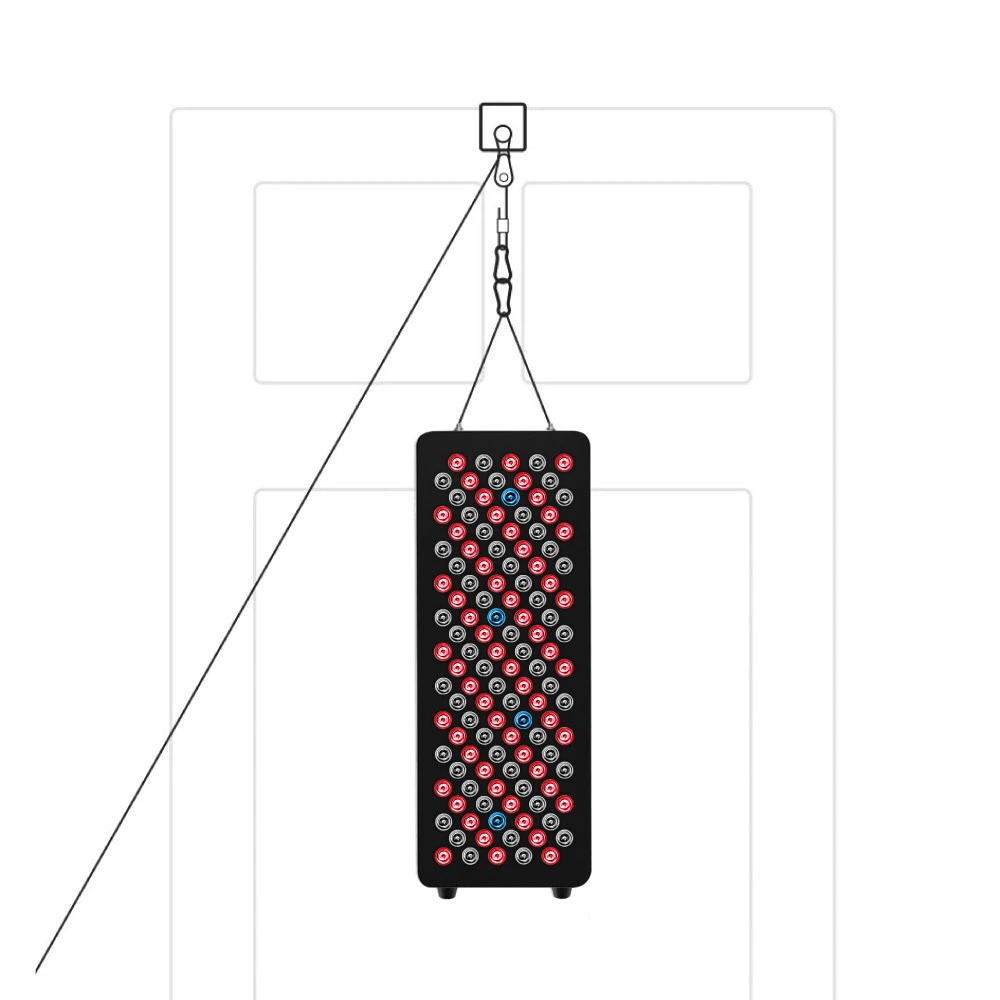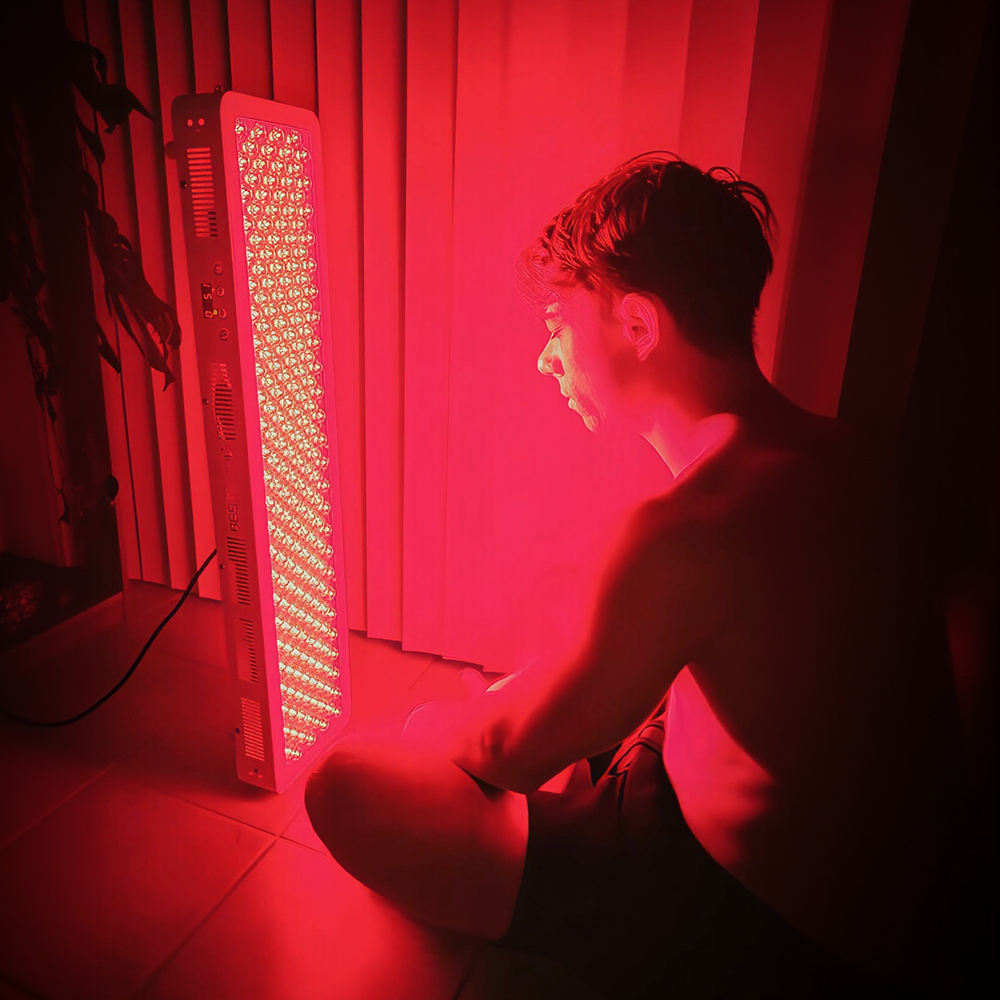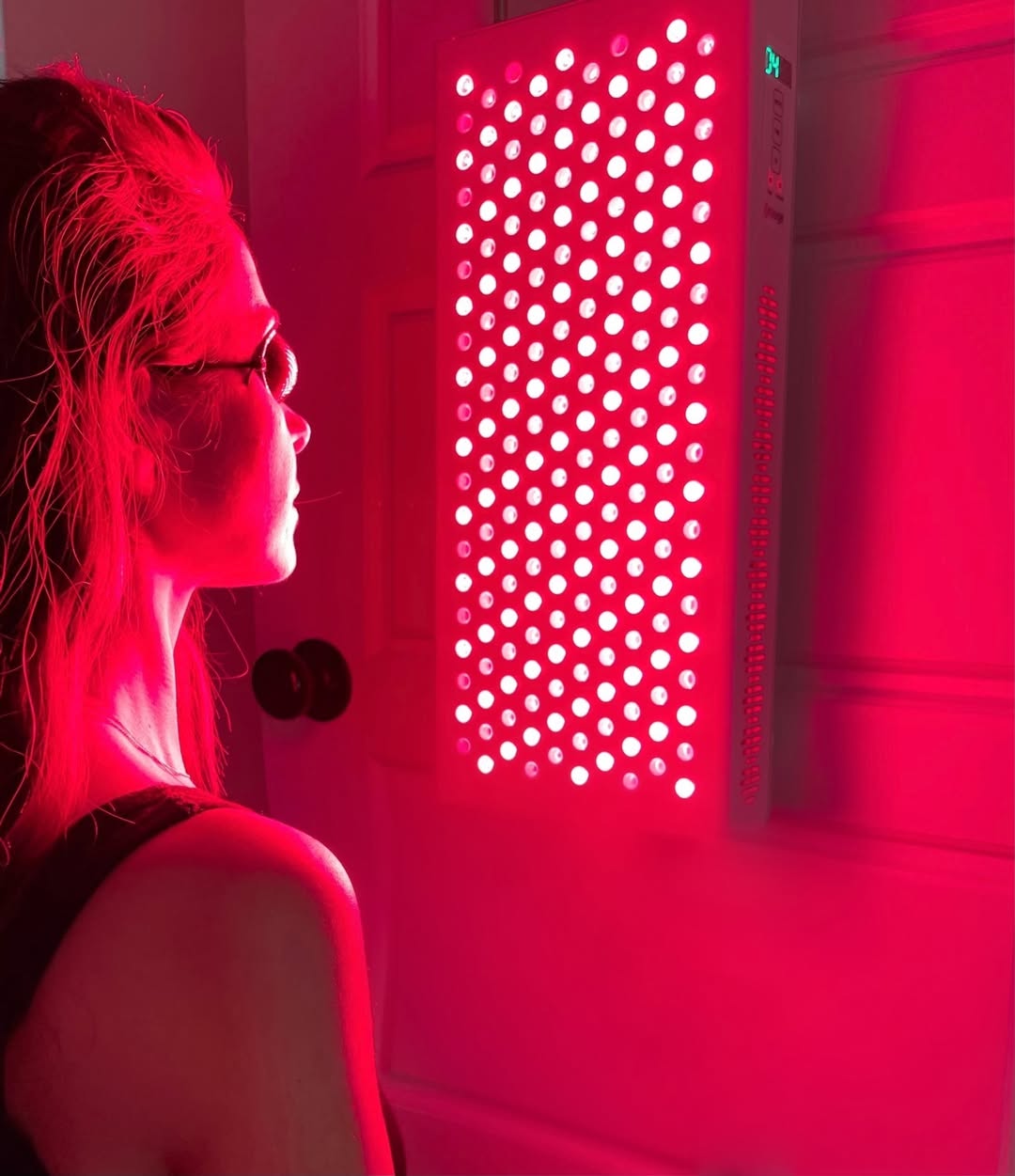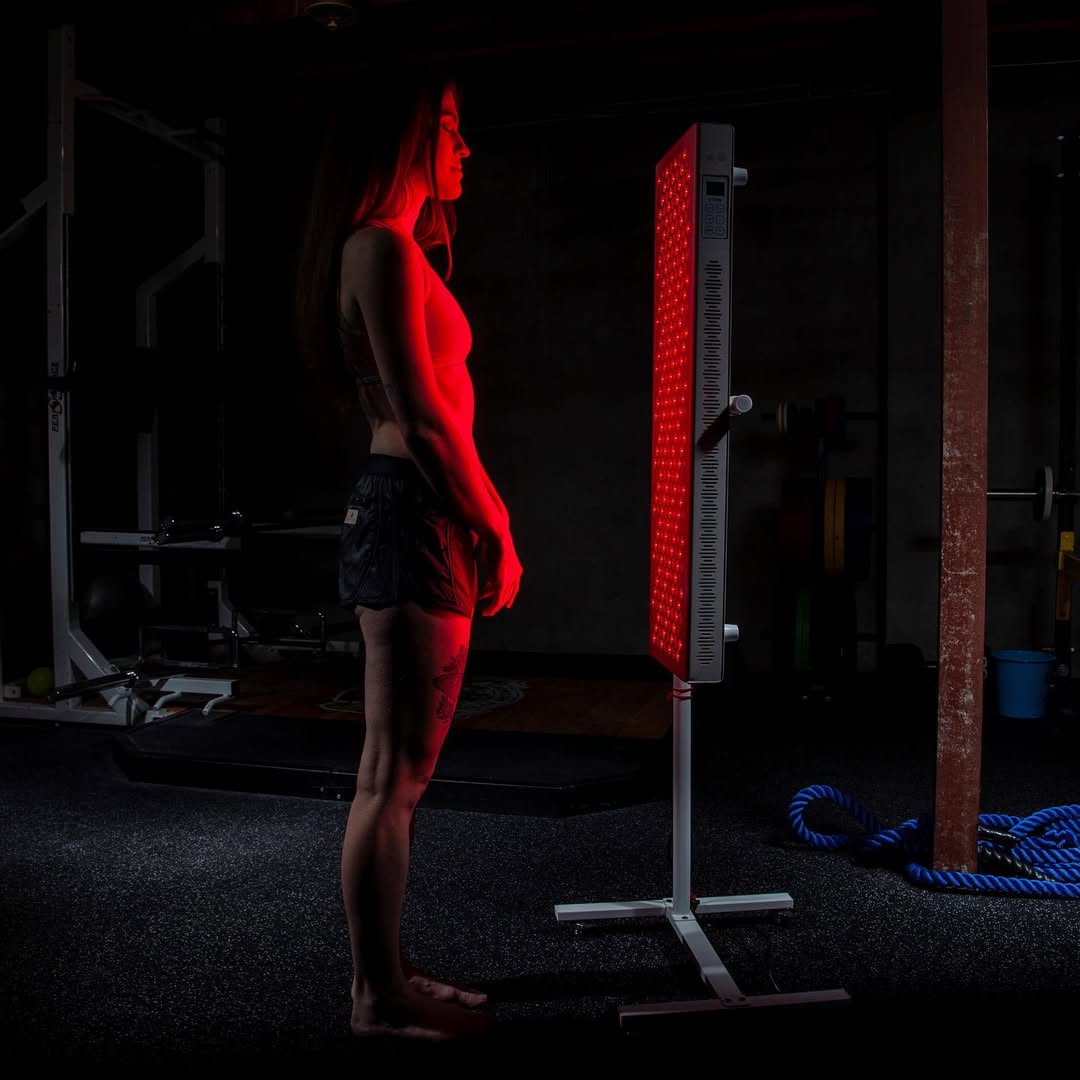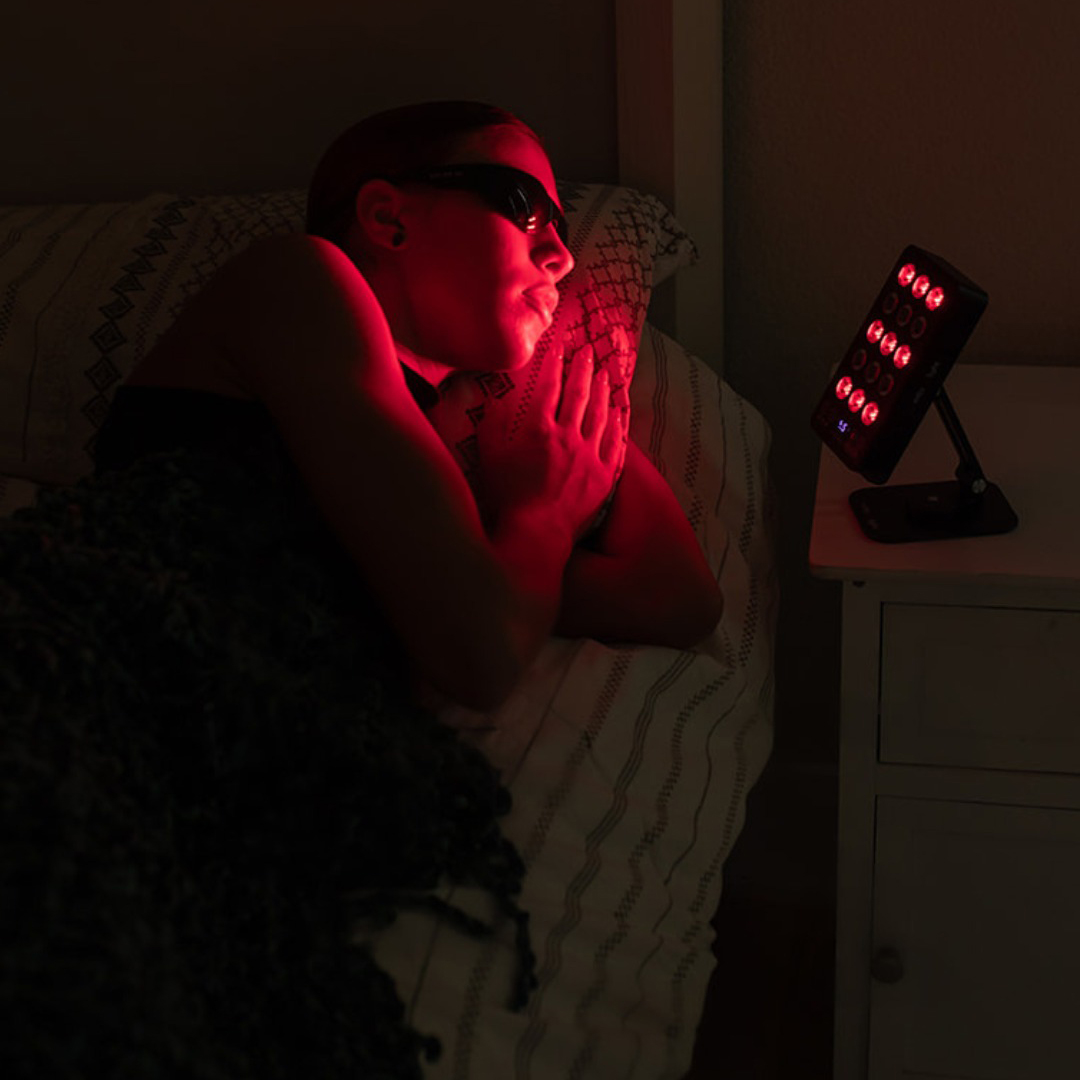![]() Free Shipping
Free Shipping ![]() Buy Now, Pay Later
Buy Now, Pay Later ![]() Eligible
Eligible
Red Light Therapy While Breastfeeding: A Full Safety Guide for New Moms

Navigating the dos and don’ts of postpartum life can be overwhelming for a new mother. Between caring for your newborn and recovering your own body, you’re likely searching for safe and effective ways to feel your best. One emerging wellness technology, red light therapy (RLT), has gained popularity for its potential benefits in healing and skin rejuvenation. But is red light therapy safe while breastfeeding?
This complete guide will break down the science, benefits, and crucial safety considerations so you can make an informed decision for you and your baby.
What is Red Light Therapy (RLT)?
Red Light Therapy (RLT), also known as Low-Level Laser Therapy (LLLT) or photobiomodulation, is a non-invasive treatment that exposes the skin to low wavelengths of red and near-infrared light.
Unlike ultraviolet (UV) light which can damage the skin, red light is designed to be therapeutic. The light energy is absorbed by the mitochondria in your cells, often called the “powerhouses of the cell.” This interaction is believed to:
- Boost cellular energy (ATP) production.
- Reduce inflammation and oxidative stress.
- Stimulate circulation and collagen production.
Is Red Light Therapy Safe While Breastfeeding? Understanding the Evidence
This is the most critical question, and the short answer is: Yes, red light therapy is generally considered safe for breastfeeding mothers when used appropriately on external areas of the body.
Here’s a deeper look at the evidence supporting this:
- Non-Ionizing Radiation: RLT uses non-ionizing radiation, meaning it does not have enough energy to damage DNA or cells. This is a key differentiator from harmful radiation like X-rays.
- Topical and Superficial: When used as directed on devices for home use or in clinical settings, the light penetrates only the skin and underlying tissues (a few millimeters to centimeters). It does not penetrate deeply enough to reach systemic circulation or affect the composition of breast milk stored deep within the breast tissue.
- Lack of Systemic Effect: Because the light energy is absorbed locally, it is not known to enter the bloodstream or be transferred to your baby through breast milk.
Expert Insight: “Based on our current understanding of photobiomodulation, treating areas like the face, joints, or even the abdominal skin for healing is not expected to pose any risk to a lactating mother or her infant. The energy simply doesn’t travel far enough to interact with the mammary glands or milk production on a systemic level.” – Paraphrased from general clinical consensus in photomedicine.
Important Safety Distinction: Breast Milk is Not Directly Exposed
It is crucial to understand that safety refers to using RLT on areas away from the breast or on the breast surface for specific issues (like healing cracked nipples), without directly aiming the device at the nipple or areola in a way that exposes expressed milk.
Never shine red light therapy directly into a container of expressed breast milk, as the effect of light on the complex nutritional components of milk is not well-studied.
Potential Benefits of Red Light Therapy for Breastfeeding Moms
The postpartum period brings unique physical challenges. RLT may offer several benefits that align perfectly with a new mother’s needs.
1. Postpartum Healing and Pain Relief
After delivery, especially a C-section, the body needs to heal. RLT’s anti-inflammatory and tissue-repair properties can be beneficial.
- C-Section Scar Healing: Applying RLT to a healed incision site may help reduce scar tissue, improve the appearance of the scar, and decrease tenderness.
- Perineal Healing: For perineal tears or episiotomies (once the skin is fully closed), RLT can support tissue repair and reduce pain and swelling.
2. Management of Mastitis and Clogged Ducts
This is one of the most promising applications. Mastitis is inflammation of the breast tissue, often with an infection. RLT can be a powerful complementary therapy.
- Reduces Inflammation: The primary action of RLT is to reduce inflammation, which can help relieve the pain, redness, and swelling associated with a clogged duct or mastitis.
- Improves Circulation: By stimulating blood flow, it may help clear the blockage more efficiently.
- Important Note: RLT should be used in conjunction with standard care for mastitis, which includes frequent milk removal (nursing/pumping) and consulting a doctor for potential antibiotics. It is not a replacement for medical treatment.
3. Skin Rejuvenation and Stretch Marks
Hormonal shifts and skin stretching can leave their mark. RLT’s ability to stimulate collagen and elastin production can help.
- Facial Care: Safe for use on the face to address postpartum acne, dullness, or melasma.
- Reducing Stretch Marks: Consistent use on the abdomen, hips, and breasts may help improve the texture and appearance of striae (stretch marks) by promoting new, healthy skin growth.
4. Boosting Mood and Combating Fatigue
The sleep deprivation of new motherhood is real. Near-infrared light, in particular, has shown promise in supporting brain health.
- Cellular Energy in the Brain: By improving mitochondrial function in brain cells, RLT may help improve energy levels and cognitive function.
- Potential for Mood Support: Some studies suggest RLT can have a positive effect on mood, which can be a helpful tool in warding off the “baby blues.”
A Quick-Reference Safety Table for Breastfeeding Moms
| Consideration | Is It Safe? | Notes & Precautions |
|---|---|---|
| General Use on Body | Likely Safe | Using on limbs, back, face, or abdomen is considered low-risk. |
| Use on Breasts | Use with Caution | Can be used on breast tissue for mastitis/clogs, but avoid direct, prolonged exposure to the nipple/areola. |
| C-Section Scar | Likely Safe | Ensure the incision is fully closed and healed before applying RLT. |
| Cracked Nipples | Consult a Professional | While potentially beneficial for healing, consult an IBCLC or doctor first. Use the lowest effective dose. |
| During Pumping | Not Recommended | Do not use the device while milk is being expressed or on collection bottles. |
| Device Type | Home-Use or Clinical | Both are acceptable. Ensure the device is from a reputable company and emits safe wavelengths. |
Practical Guidelines and Precautions
If you and your healthcare provider decide RLT is right for you, follow these practical steps for safe use.
- Consult Your Healthcare Team First: Before starting any new therapy, discuss it with your doctor or a lactation consultant (IBCLC). This is non-negotiable.
- Choose the Right Device: Opt for a reputable, FDA-cleared device designed for home use. Be wary of cheap, unverified products online.
- Follow Dosage Instructions: More is not better. Adhere strictly to the manufacturer’s guidelines for treatment time and distance from the skin.
- Listen to Your Body: If you experience any discomfort, pain, or unusual symptoms, stop the treatment immediately.
- Stay Hydrated: RLT can stimulate cellular processes, so drinking plenty of water is always a good practice.
VELLGUS Elite V2
THE #1 RATED RED LIGHT DEVICE
VELLGUS pro V2
THE #1 RATED FULL BODY RED LIGHT DEVICE
The Bottom Line: A Promising, Low-Risk Tool
Red light therapy presents a compelling, low-risk option for breastfeeding mothers seeking support for postpartum recovery, from healing scars and managing mastitis to improving skin health. The current scientific understanding indicates that its localized, non-invasive nature makes it compatible with lactation when used responsibly.
As with any postpartum wellness decision, the key is informed caution. By consulting your healthcare provider and following safety guidelines, you can confidently explore whether red light therapy is a beneficial addition to your postpartum wellness routine.



